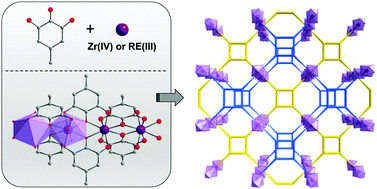Adaptability of the metal(iii,iv) 1,2,3-trioxobenzene rod secondary building unit for the production of chemically stable and catalytically active MOFs†
Abstract
The use of a 5,10,15,20-tetrakis(3,4,5-trihydroxyphenyl)porphyrin has yielded a new MOF based on M-1,2,3-trioxobenzene chains that can be made of M = Zr(IV) or RE(III) (RE = rare earth), showing a very high and limited chemical stability, respectively. The robust metallated Zr-analogue, Co-MIL-173(Zr), has proven to be a heme-like heterogeneous catalyst suitable for aerobic oxidation of hydrocarbons.



 Please wait while we load your content...
Please wait while we load your content...